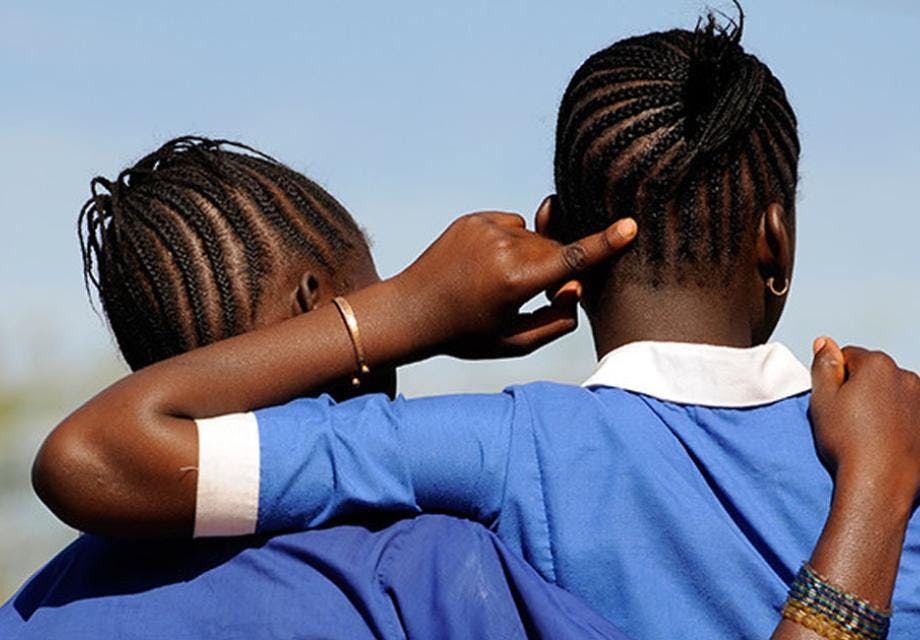Gender-based violence interventions for young people show disappointing results
Avert staff writers
13 September 2019
An analysis of gender-based violence (GBV) interventions for young people living with or affected by HIV finds that fewer than half are effective.
A systematic review and meta-analysis of 18 studies conducted in South Africa, Uganda, Kenya, Zimbabwe, Ethiopia and Brazil has found that overall only 10 of 21 interventions showed a reduction in GBV or in GBV-related attitudes. The systematic review also found the overall quality of research to be poor.
The World Health Organization estimates that one in three women will experience GBV in their lifetime. Adolescent girls and young women (aged 10-24), women living with HIV and people from populations most affected by HIV, such as transgender people, men who have sex with men and sex workers, are particularly vulnerable. Studies such as this one, due to be published by AIDS, are therefore essential for understanding what works to lessen GBV among vulnerable population groups.
The primary outcomes assessed by the study were a reduction in physical, emotional, or sexual intimate partner violence (IPV) or non-partner sexual violence, including unwanted sexual touching, forced sex, rape, sexual assault and emotional abuse. Changes to GBV-related attitudes were also analysed, such as whether a man has the right to have sex with a partner regardless of consent.
The analysis grouped GBV interventions into various categories. Sexual health and social empowerment (SHSE) included interventions relating to HIV prevention and sexual and reproductive health and rights, such as contraception, gender-equitable norms and conflict resolution skills. A separate category, SHSE with economic strengthening, also included vocational skills, savings accounts and financial-skills training.
Self-defence interventions comprised of skills taught to females to enable them to defend themselves against assault, including de-escalation techniques and empowerment training. A similar category, GBV sensitisation, educated young men about issues such as gender norms, GBV and consent.
Safer schools focused on educating schools and teachers about positive discipline techniques and teacher-child power dynamics. A separate category combined safer schools interventions with parenting techniques.
Economic strengthening interventions, such as cash transfers or saving-account schemes, were also assessed.
As well as showing less than half the interventions to be effective, the results also showed multi-component interventions to be more effective than single-component ones.
Self-defence and GBV sensitisation interventions were found to lead to promising reductions in people’s exposure to GBV, but led to no or mixed effects on GBV perpetration and attitudes.
Multi-component SHSE and SHSE-plus economic strengthening were found to lead to a small reduction in GBV exposure but not to a reduction in the perpetration of GBV.
When delivered in isolation, safer schools interventions and economic interventions were shown to have little or no impact. Indeed, the analysis found the provision of savings accounts possibly increased exposure to GBV, although there was some evidence that cash transfer schemes reduced GBV exposure. In one study, the only clear impact the safer schools intervention had was an increase in the level of reporting of sexual violence among girls.
All multi-component interventions used some form of group-based participation. This suggests involving adolescents through role-play, discussions and workshops could be a factor in whether an intervention is successful or not.
The analysis found high or unclear risk of bias across most assessment categories for most randomised studies and moderate or high risk of bias in non-randomised studies. In addition, there were too few studies in some intervention categories, such as safer-schools plus parenting, or insufficient information to perform a comprehensive analysis.
None of the interventions analysed focused explicitly on adolescents and young people living with HIV or from population groups most affected by HIV. While some of these people were potentially included in the studies, no information was provided on whether interventions were specifically suitable for these groups or would require adaptation for these groups or contexts outside of sub-Saharan Africa. Furthermore, most interventions focused on preventing IPV in heterosexual relationships; only three focused specifically on non-partner sexual violence.
Most of the interventions targeted adolescent girls and young women, and there was little evidence about what works to change the behaviour and attitudes of their male peers. In addition, none of the interventions acknowledged that adolescent boys and young men, and young people who are gender non-conforming, are also victims of GBV.
Only one study in the review invited young people to co-create interventions, and only half involved young people in intervention planning. This is despite the fact that participatory research has been shown to make interventions more acceptable to those they are meant for.
The findings suggest that, to be more effective, future intervention research should specifically include adolescents and young people living with HIV and people from populations most affected by HIV, and have a mix of male and female participants. Young people from a diverse range of population groups should also be included in designing and evaluating interventions.
Get our news and blogs by email
Keep up-to-date with all our latest news stories and blogs by signing up to the Be in the KNOW news digest.
